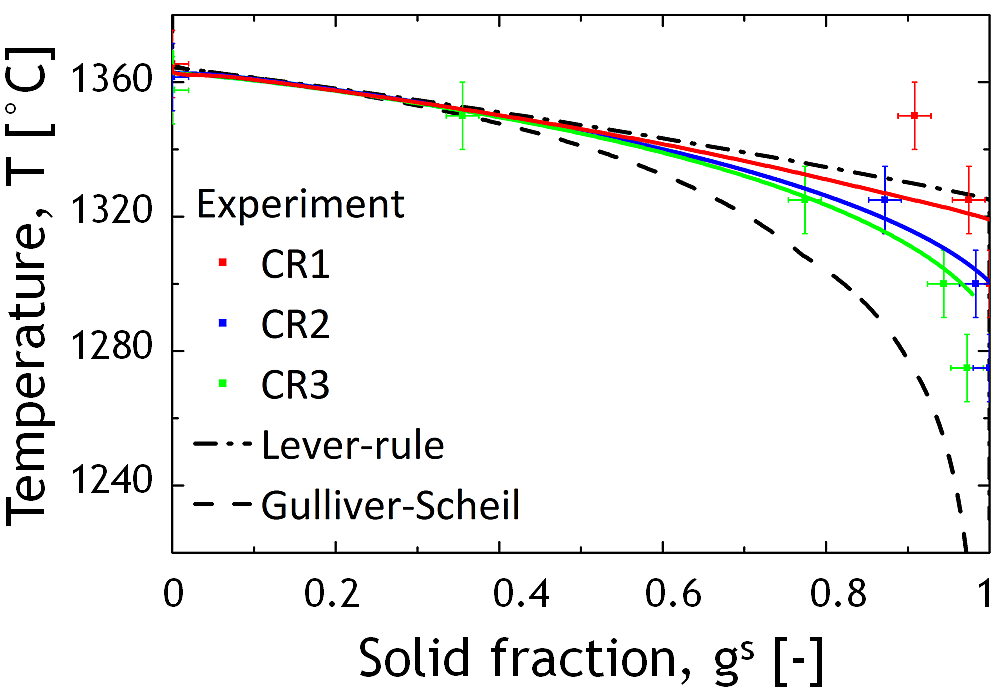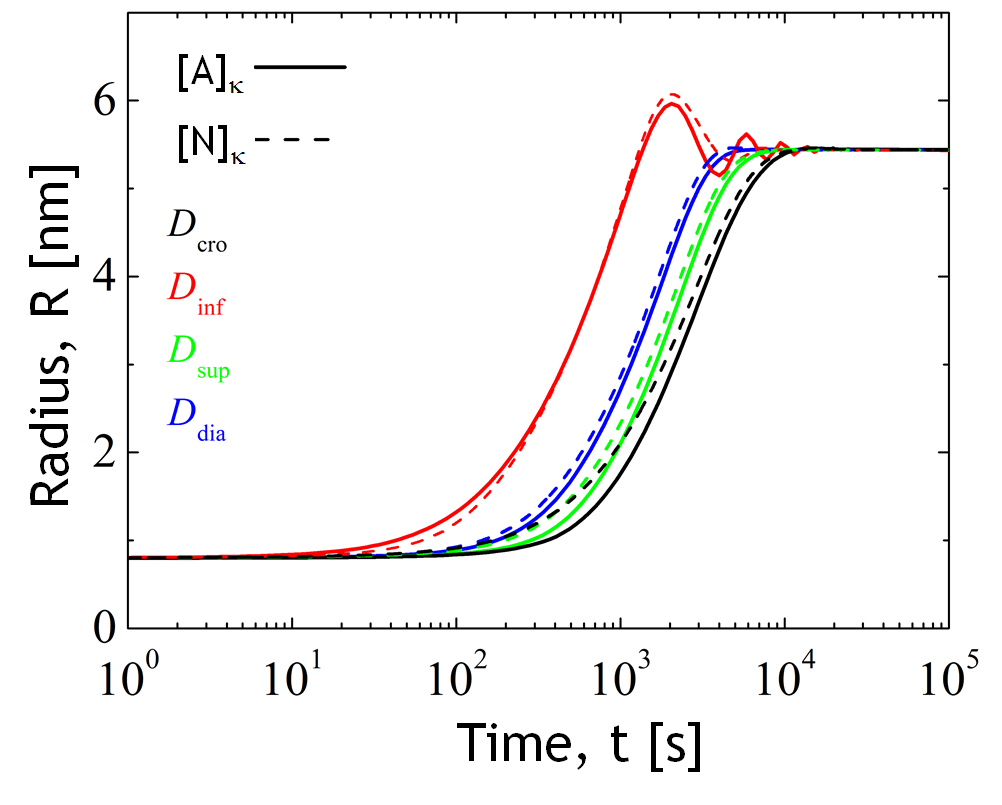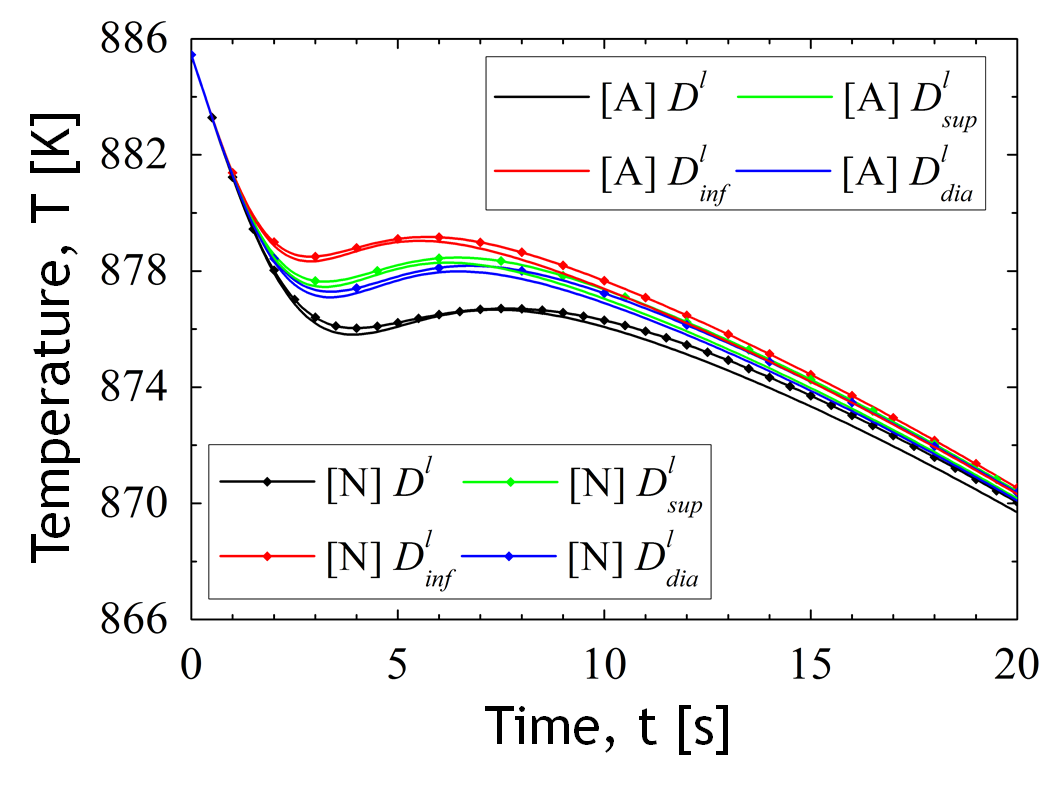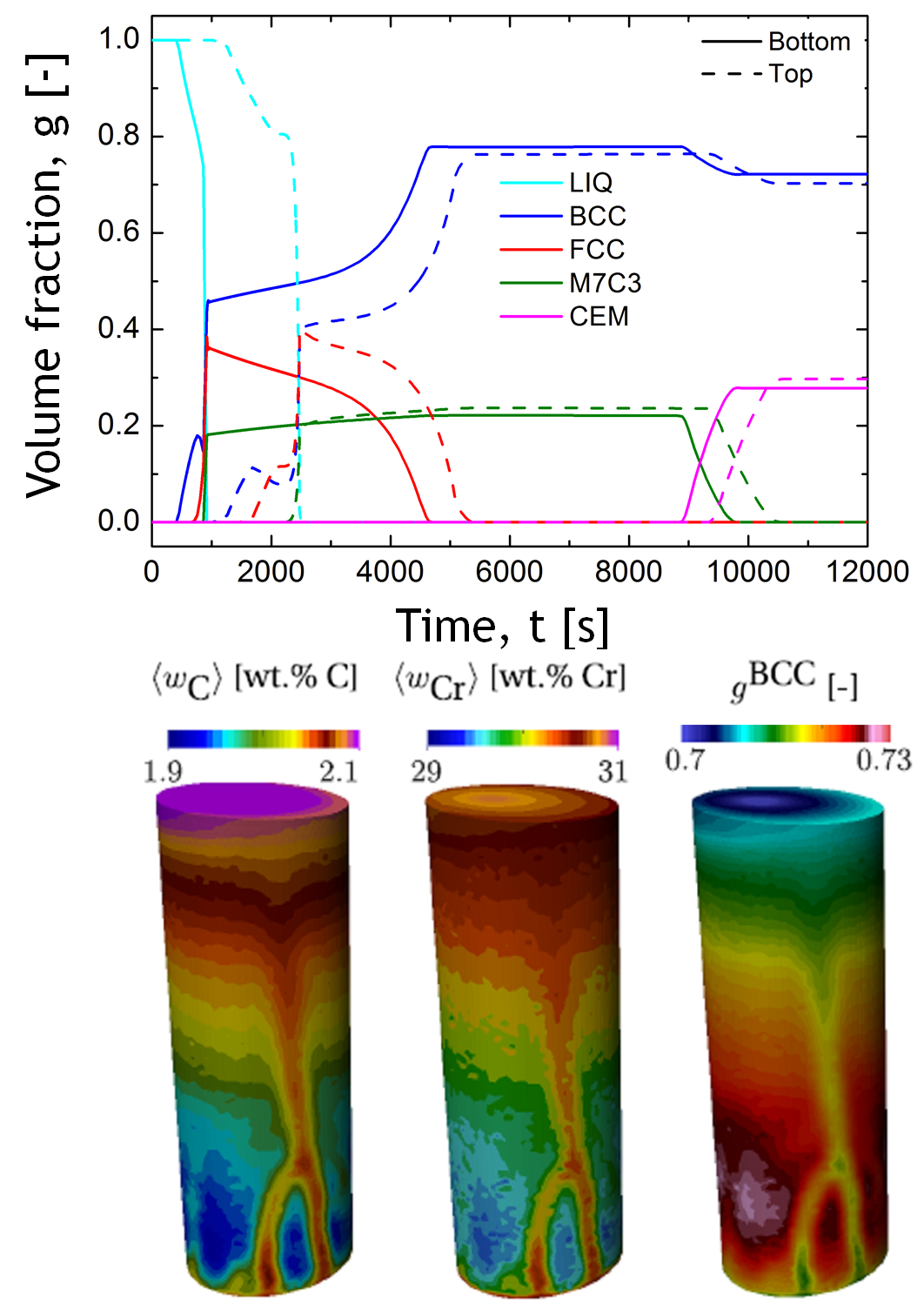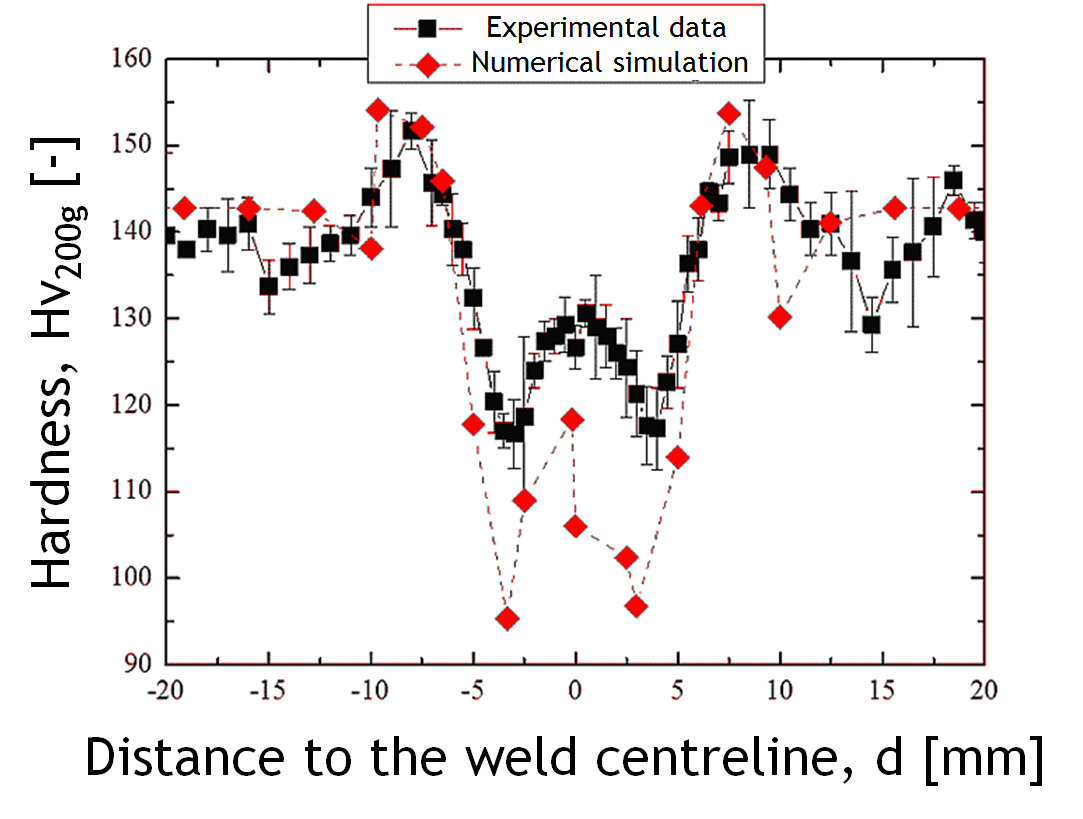MinesParis – PSL – CEMEF research activities are dedicated to the modelling of material forming processes. Within the CEMEF, the 2MS team benefits from the use of software Thermo-Calc and its associated databases. Assuming thermodynamic equilibrium at interfaces, properties between phases in multicomponent systems are made accessible. Diffusion matrices are also computed at any position. These properties largely drive the kinetics of phase transformations.
The numerical tools developed over the years make use of direct call to Thermo-Calc. A computing C++ library named PhysalurgY (PY) has emerged from these developments. It is structured, stabilized and frequently updated and enhanced based on research projects.
More than 10 tools are currently available. Examples presented on the right hand side deal with various physical phenomena of interest in material processing simulation and cover a wide range of modelling. (Fig. 1: PY\MILD) microsegregation in metallic alloys based on the computation of diffusion lengths, (Fig. 2: PY\MIFT) direct one‑dimensional front-tracking simulation of diffusion problems and (Fig. 3: PY\MIAN) analytical solution of diffusion driven growth.
In addition, tools are built to give access to growth kinetics of (PY\KIND) dendrite tip and (PY\KINE) eutectic lamellae, or more simply (PY\DICO) to compute the diffusion coefficients at given temperature and composition. For coupling with large scale process simulations, the phase transformations during processes are required, together with detailed description of the materials properties (phase, composition, density, enthalpy…).
PhysalurgY provides (Fig. 4: PY\PATH) tabulation of phase properties that are directly ready for our finite element solvers of conservation equations (energy, solute mass, total mass, momentum), e.g. for computation of channel segregations upon directional solidification of a multicomponent alloy. The last example on the right hand side concerns modelling of solid state transformations upon thermomechanical evolution. The consequence of (Fig. 5: PY\PREC) dissolution/growth of solid state precipitates on the profile of hardness in an aluminium alloy weld can be predicted showing the evolution of mechanical properties in Heat Affected zone, Thermomechanical affected zone and Nugget domains.
The objective is to have a step by step enhancement of PhysalurgY by integrating future developments.

